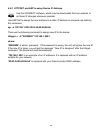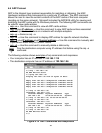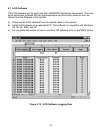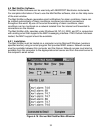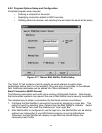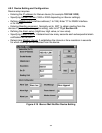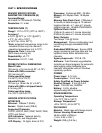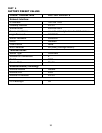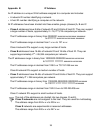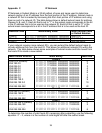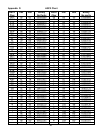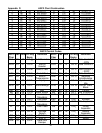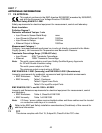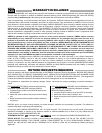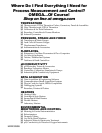
APPENDIX A GLOSSARY
User of this manual should be familiar with following definitions:
ARP (Address Resolution Protocol) is a protocol for mapping an Internet Protocol
address (IP address) to a physical machine address that is recognized in the local
network. For example, the IP address in use today is an address that is 32-bits long.
In an Ethernet local area network, however, addresses for attached devices are 48-bits
long. (The physical machine address is also known as a Media Access Control or MAC
address.) A table, usually called the ARP cache, is used to maintain a correlation between
each MAC address and its corresponding IP address. ARP provides the protocol rules for
making this correlation and providing address conversion in both directions.
Ethernet is a network protocol defined by the IEEE 802.3 standard. Ethernet-based
networks use MAC Address rather then IP Address to exchange data between computers.
By using ARP and adding TCP/IP support, Ethernet devices may be connected as part of
the Internet. An Ethernet LAN typically uses coaxial cable or special grades of twisted pair
wires. The most commonly installed Ethernet systems are called 10BASE-T and provide
transmission speeds up to 10 Mbps. Devices are connected to the cable and compete for
access using a Carrier Sense Multiple Access with Collision Detection (CSMA/CD)
protocol.
IP (Internet Protocol) is the method or protocol by which data is sent from one computer
to another on the Internet.
IP address (Internet Protocol address) is a 32-bit number that identifies each sender or
receiver of information that is sent in packets across the Internet.
IP Netmask is a 32-bit pattern of bits used to determine which part of the IP address is the
network portion and which part is the host portion.
MAC (Media Access Control) Address is your computer's unique hardware number.
When you're connected to the Internet from your computer, a correspondence table relates
your IP address to your computer's physical (MAC) address on the LAN.
Ping is a utility that tests the network connectivity. It is used to determine if the host is
capable of exchanging information with another host.
Port number/Socket number is a way to identify a specific process to which an Internet
or other network message is to be forwarded when it arrives at a server. It is a predefined
address that serves as a route from the application to the Transport layer or from the
Transport layer to the application of the TCP/IP system.
Sockets are a method for communication between a client program and a server program
in a network and defined as "the endpoint in a connection." Information transferred across
the Internet primarily occurs between sockets.
TCP/IP (Transmission Control Protocol/Internet Protocol) is the basic communication
language or protocol of the Internet. When you are set up with direct access to the
Internet, your computer is provided with a copy of the TCP/IP program just as every other
computer that you may send messages to or get information from also has a copy of
TCP/IP. TCP/IP often is used as a general term to indicate generic access to the Internet.
UDP/IP (User Datagram Protocol/Internet Protocol) is the TCP/IP standard protocol that
allows an application program on one machine to send a datagram to an application
program on another. The UDP can be either in Broadcast or Directed form. The Broadcast
UDP transmits data to every node on the same network. The Directed UDP transmits data
to one node only.
37



